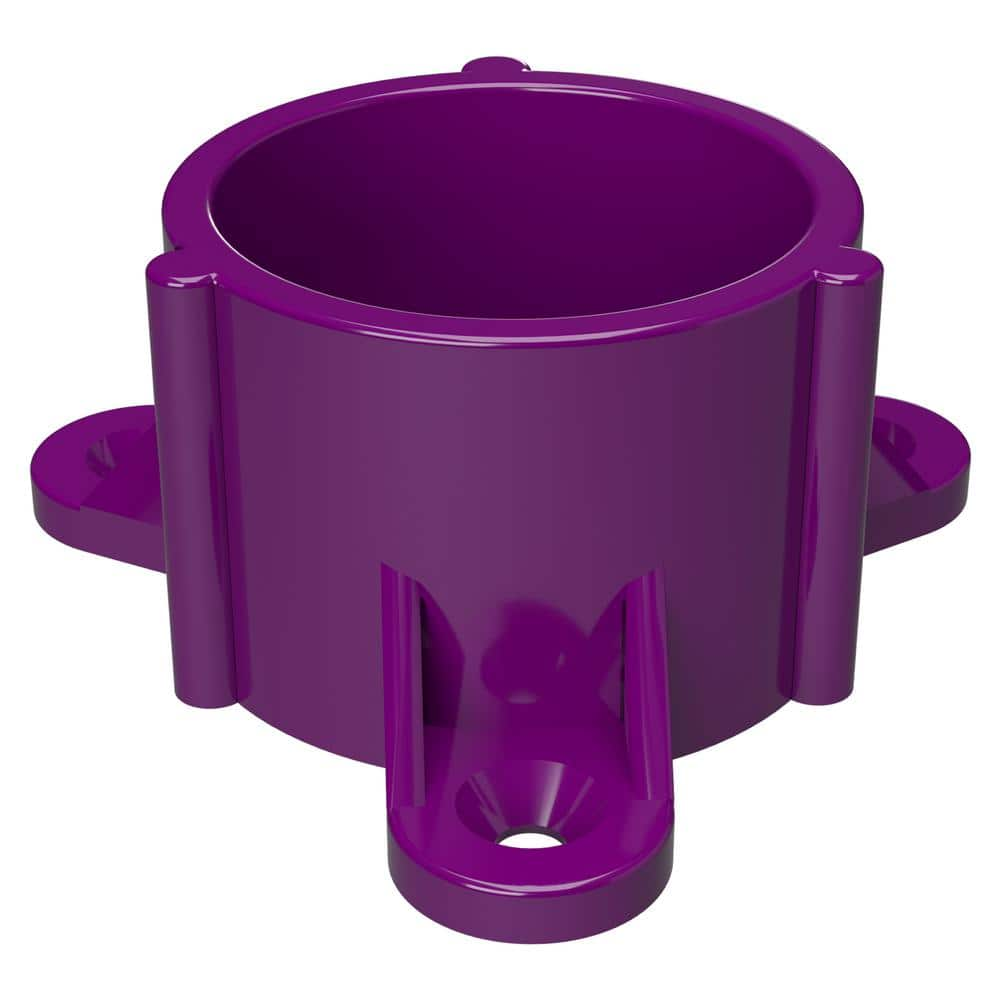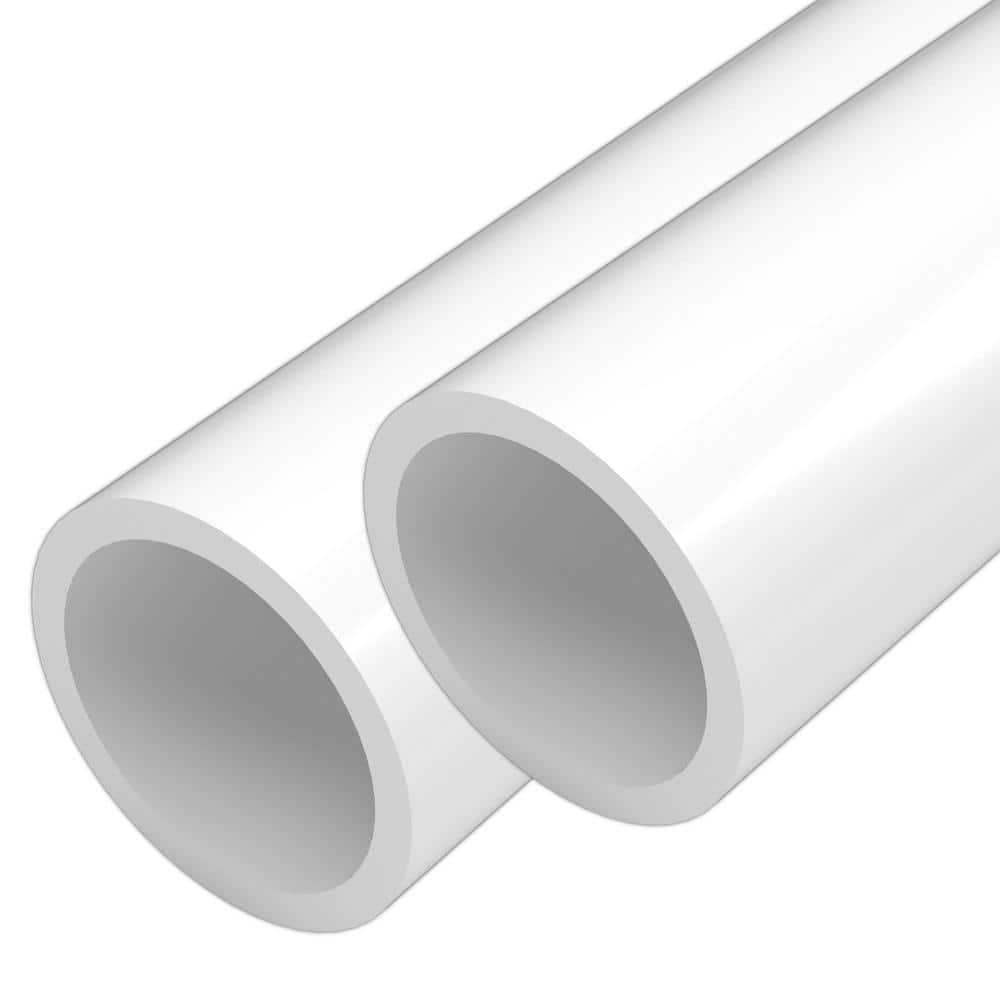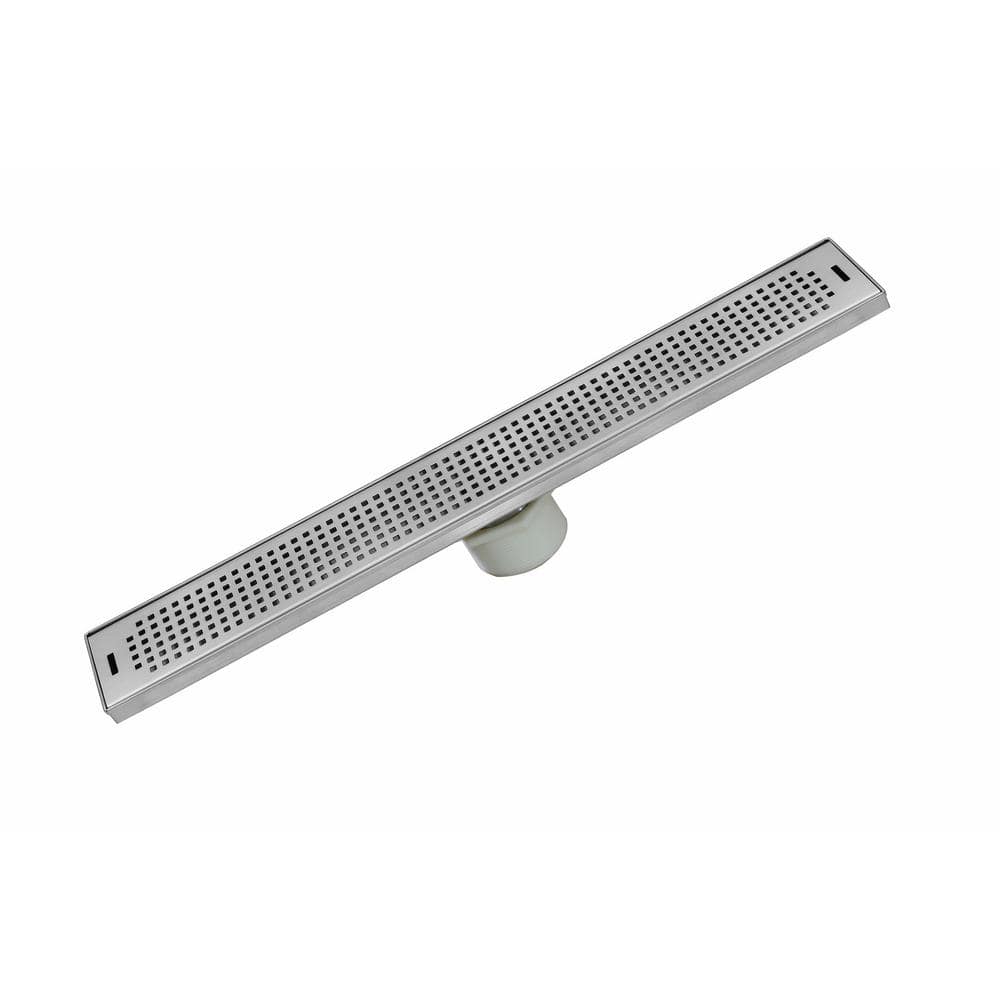Types of Fittings for Gas and Water Pipes
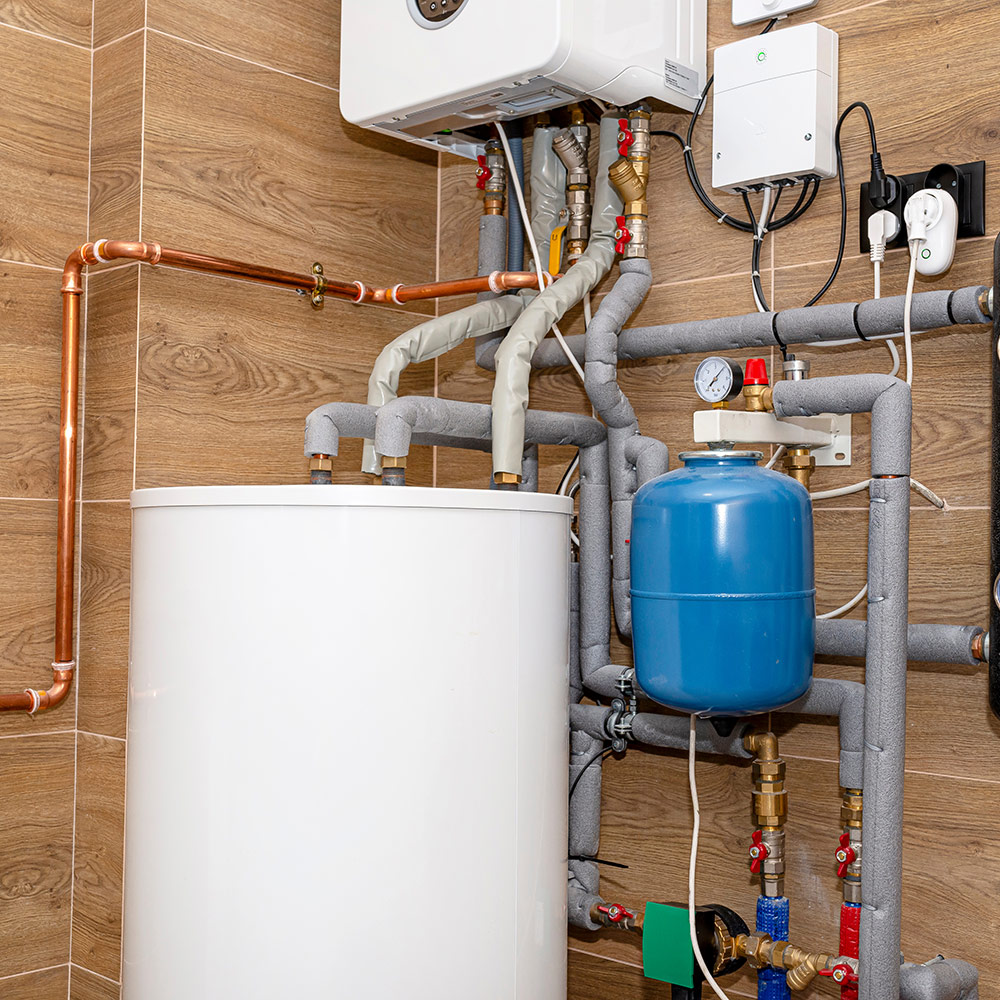
Last updated September 7, 2023
Fittings are essential components in any pipe installation. They play a critical role in joining pipes together and allowing a series of pipes to change directions as needed. This guide helps you determine the types of fittings you need before beginning any plumbing project.
Table of Contents
Fitting Designs and Installation Considerations
Installation Considerations
Types of Fittings
Fitting Features
Fitting Designs and Installation Considerations
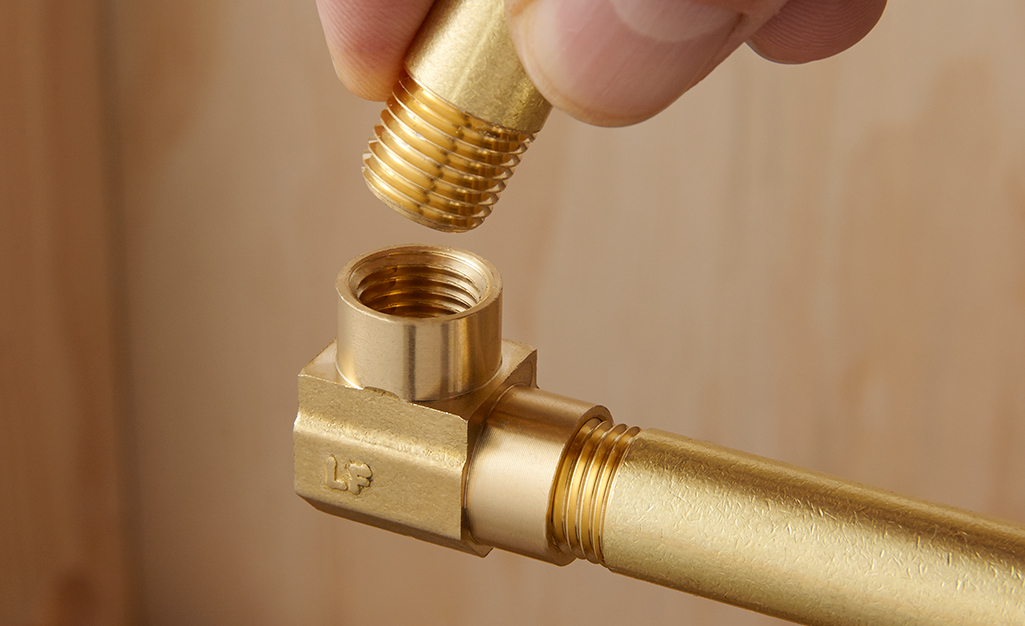
When choosing the correct fittings, you need to know the difference between female fittings, which are threaded on the inside, and male fittings, which close around a female fitting. Pipes tend to end in male fittings, and there will be times when you will use a street fitting which has both a male and female end. You also need to understand the difference between supply fittings and DWV fittings.
Supply Fittings: Also known as pressure fittings, supply fittings rely on water pressure to maintain flow. They are used above ground to connect pipes that provide water to faucets and fixtures. There are a number of different designs available, each of which serves a special purpose.
- Designs: Tees are T-shaped fittings that divert water from one line to another. They have three identical female openings located at 90-degree angles from each other. Couplings are used to join the ends of two pipes in a straight line, while unions feature three separate pieces – a tail piece, thread piece and nut. With a union, you can connect or disconnect pipe in the middle of a line. They must be used when you are working with threaded pipe because you cannot screw pipe into both ends at once. Plugs are used to seal a fitting at the end of a pipeline to provide an easy setup for changes or additions that must be made to the line in the future.
- Features: Water supply fittings may be made of copper, PVC or CPVC. Crows feet tees connect a fourth pipe while elbow fittings, or ells, change the direction of a pipeline and feature two female threads. Elbows are most commonly curved at 45-degree or 90-degree angles. Street ells feature a female thread on one end and a male thread on the other. Use adapter couplings to connect a soldered or glued joint to a threaded joint. Caps are used to seal off the end of a pipe.
DWV Fittings: DWV stands for “drain-waste-vent.” These fittings use gravity to move used water and waste out of your house. DWV fittings alter the direction of waste flow gradually so it won’t get bogged down at any point. They are used with pipes that remove water from sinks, toilets and tubs. They also help in venting the drainage system by removing unwanted and noxious gases from your home. DWV fittings come in a wide range of designs.
- Designs: Elbow joints are available in a selection of angles ranging from 22.5 degrees to 90 degrees. Y-shaped fittings called “wyes” join two separate lines. A P-trap is attached beneath a sink, where it traps water in the arc of the fitting, sealing it in while preventing sewer gases from seeping into your house. Sanitary tees and long radius tees help with the removal of waste and water while vent tees have 90-degree angles for fittings used in the venting side of the system.
- Features: DWV fittings determine the slope of your piping system. As a general rule, slope pipe downward 1/4-inch for every horizontal foot of pipe. DWV fittings should be made from the same material as the pipes. Closet elbows connect a toilet to the main drain while wyes use a 45 degree angle to maintain an uninterrupted flow. Cleanouts offer a convenient way to unclog blockages in your drainage system.
Reduction and Transition Fittings: When two different sizes of pipe or pipe made from different materials need to be linked, special fittings are required. Reduction and transition fittings share similar designs. Reducer elbows, tees and wyes have one end that’s smaller than the other, allowing for the transition from one pipe size to another. They feature two female ends. Bushings function in the same way as reducers, but feature one male and one female end. Reducer couplings connect smaller diameter pipes with larger ones while transition couplings link copper or steel pipes to plastic ones. Some reducers reduce pipe more than one step in size. Dielectric unions are used when making the transition from steel to copper pipes.
Installation Considerations
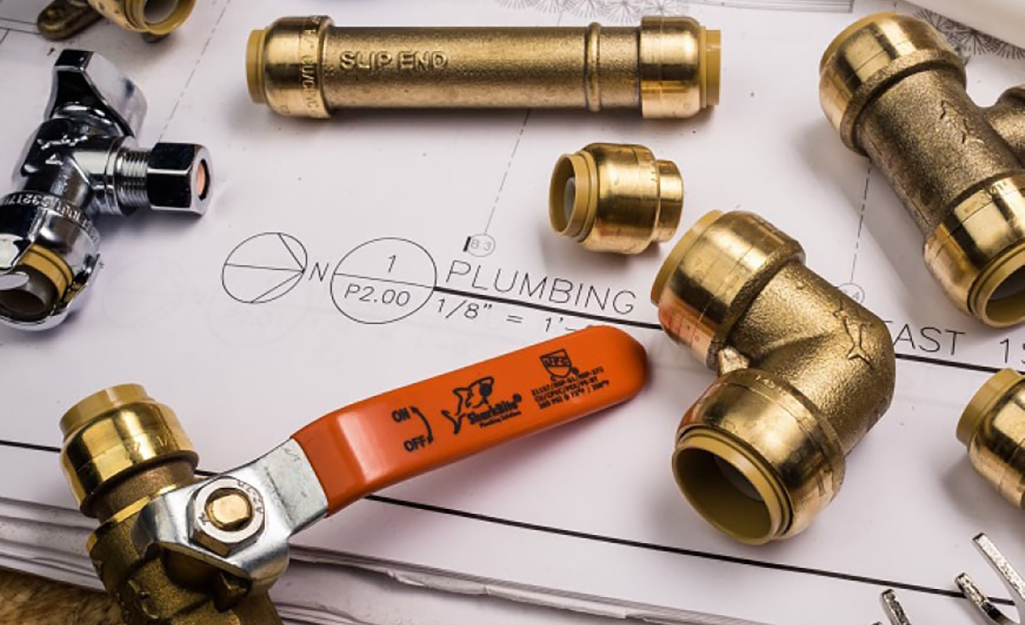
Keep in mind some important keys when installing fittings.
- Plumbing fittings are available in a variety of shapes including round, oval, square, rectangular and more. If installing a fitting on a stationary connection, a compression fitting will prevent leaks while offering a connection which is easy to connect and disconnect.
- Compression fittings consist of a nut with female threads, compression ring and male-threaded seat section. When determining the size of fittings in general, measure the diameter of male fittings to the outside edge and female fittings to the inside edge to ensure a proper fit.
- Compression fittings can be used on bathroom sinks, toilets, dishwashers and more. Avoid over-tightening fittings to prevent damage. DWV fittings may have vent inlets, but pressure fittings do not while elbows and tees with side outlets provide added versatility. Commonly used materials include ABS, brass, copper, PVC, steel, fiberglass and more.
Types of Fittings
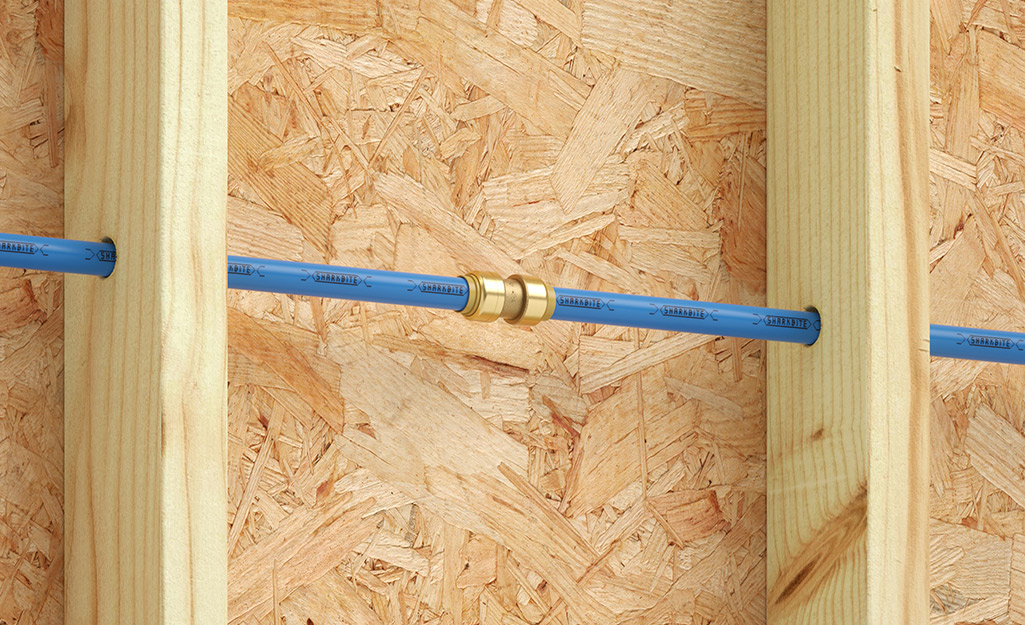
There are many different types of fittings, each with specific benefits. Following are three of the most common types of plumbing fittings.
ABS DWV Fittings use gravity to remove waste and water from your pipe system. This type of fitting is recommended for elbows, wyes, clean outs, P-traps and tees.
Couplings and adaptors are used for reductions and transitions. They link pipes of two different sizes or materials together. This type of fitting is recommended for elbows, couplings, dielectric, unions and adapters.
Supply couplings and adaptors are used on pipes that bring water to faucets and fixtures. They are installed above the ground and rely on water pressure to maintain flow. Use this type of fitting for tees, elbows, couplings, unions, caps and plugs.
Fitting Features
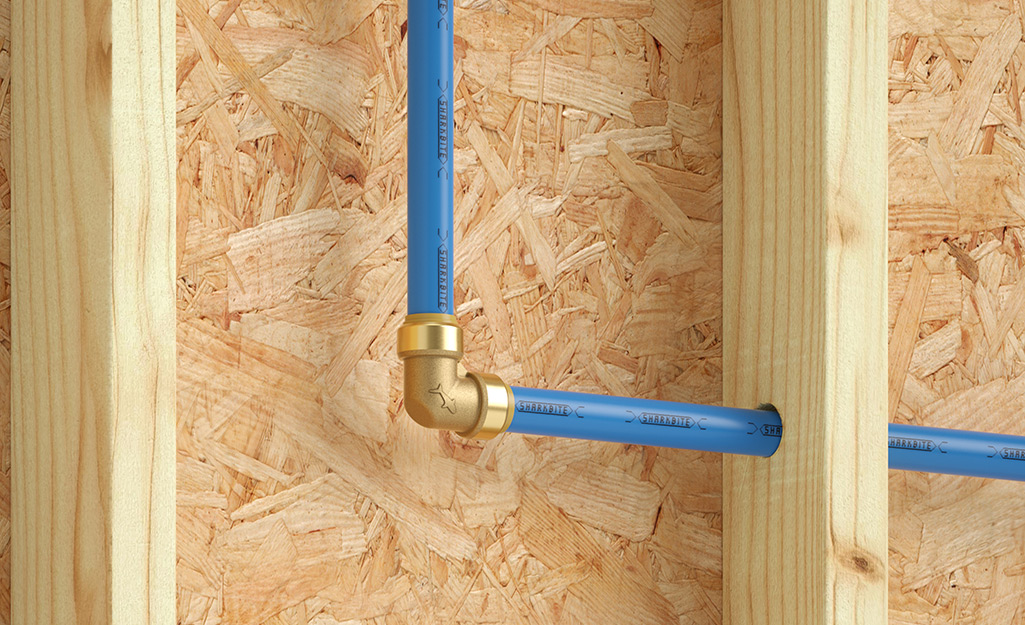
Fittings come with a variety of features specific to the job you are doing.
Underground Rated:If you’re installing a fitting in a pipeline that’s below ground, make sure it’s specially constructed for underground installation.
Plated:
Plated fittings offer a shiny, stylish appearance in installations that are visible.
Insulation:
Insulated fittings will help preserve temperatures in pipes that carry hot water, improving energy efficiency.
Drinking Water:
If you’re installing fittings on a pipeline that carries potable water, make sure they’re made of a material that’s safe for drinking water to pass through.
Swivel:
Fittings with swivels allow one or more ends to rotate, making them ideal for particularly challenging installations.
It's important to get the right fitting for your gas and water pipe project. Talk to a Pro, or use The Home Depot Mobile App to find what you need.
